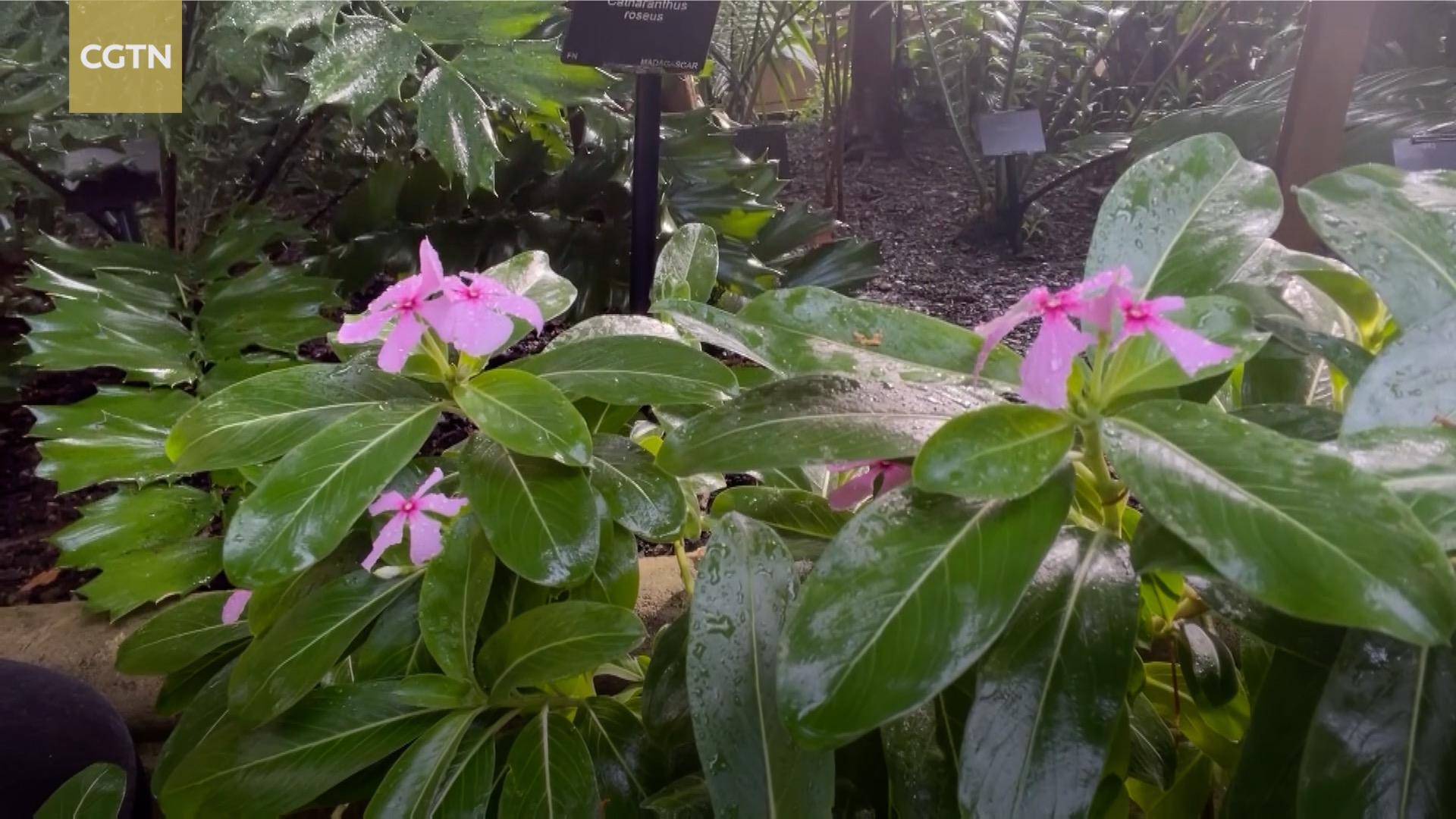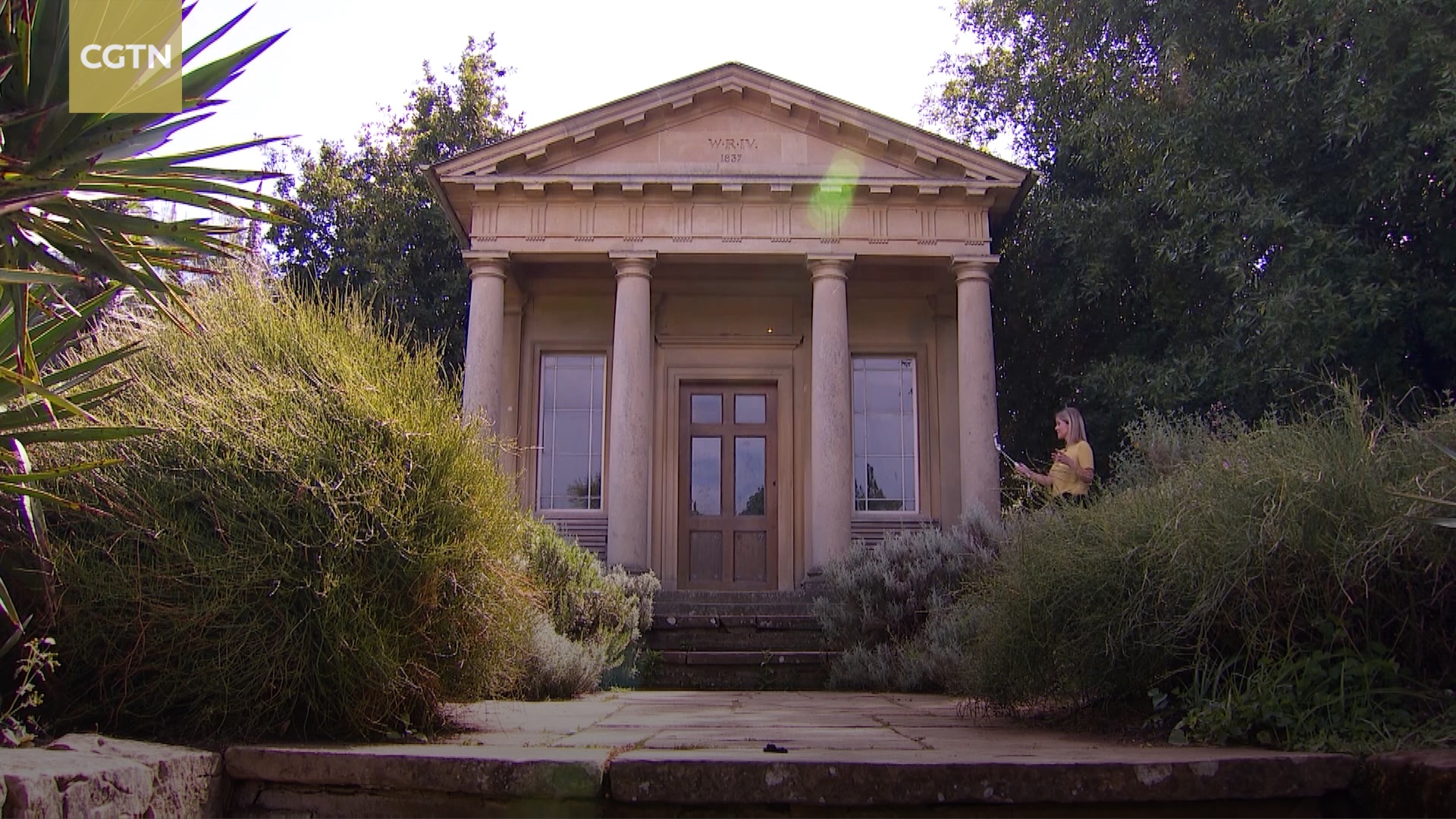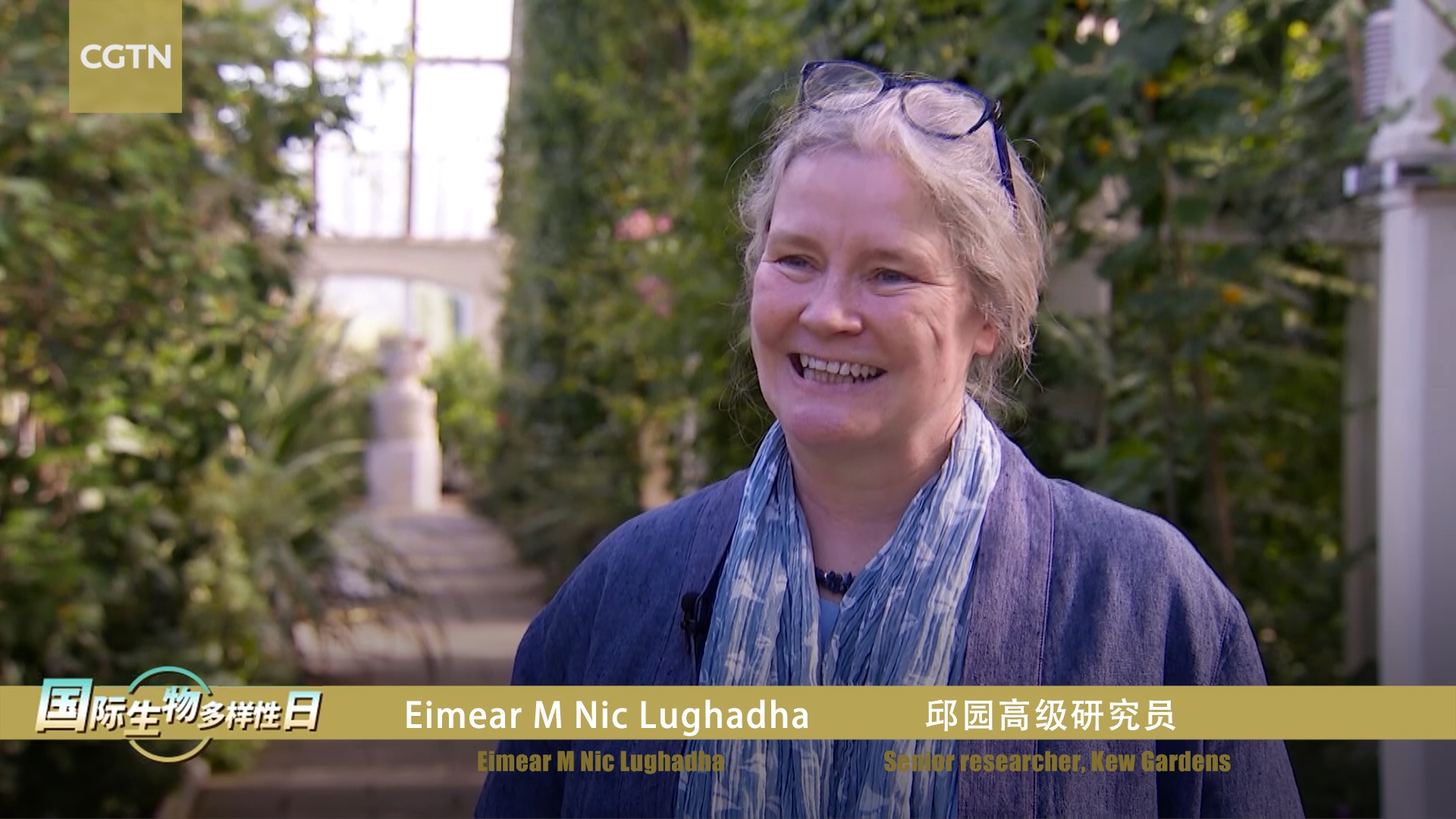Kew Gardens is not only a popular tourist destination in London, but also a botanic garden and a research center that has the largest collection of living plants at a single site.
Palm House
The first stop is the Palm House, a giant indoor rainforest with a wide range of plants. Visitors can enjoy these exotic plants while researchers can study the secrets of these flora. Eatable plants such as cocoa tree and African oil palm are all preserved here to keep the diversity of food resources. At the same time, it houses many medical use plants, including some that are used to treat cancer.

Madagascar periwinkle at the Palm House. /Video screenshot
Temperate House
Known as the world's largest Victorian glasshouse, the Temperate House is home to 1,500 species of plants from temperate regions of the world. Some of the species kept here have gone extinct in the wild, such as Encephalartos woodii, a cycad from South Africa. And some are already extinct like Saint Helena olive, but the Kew has stored its DNA.

The Temperate House. /Video screenshot
Mediterranean Garden
In the Mediterranean Garden, one can see plants from the Southern Europe, such as rosemary, olives and cork oak. Walking in the garden one can feel the vibe of the Mediterranean and learn about the economic uses of these plants.

A glimpse of the Mediterranean Garden /Video screenshot
"The biggest risk to our biodiversity right now are habitat losses, losses of our natural system and vegetation," said Eimear M Nic Lughadha, senior researcher at Kew Gardens.
Kew is cooperating with other institutions around the world, such as Germplasm Bank of Wild Species in Kunming, southwest China's Yunnan Province, to work on both education and conservation and fight against biodiversity loss.

Eimear M Nic Lughadha, senior researcher at Kew Gardens. /Video screenshot














